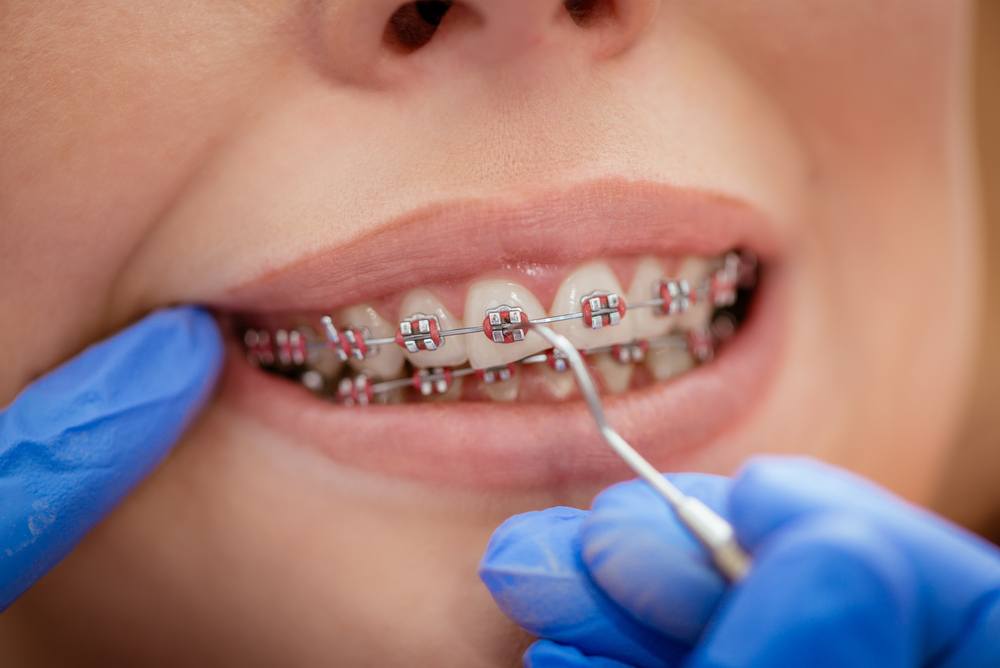How Cumming Orthodontics Addresses Common Braces and Invisalign Problems
How Cumming Orthodontics Addresses Common Braces and Invisalign Problems
Blog Article
Comprehensive Overview to Orthodontics Procedures for Fixing Oral Misalignments
In the world of orthodontics, the journey to attaining a perfectly aligned smile includes a myriad of treatments tailored to fix oral imbalances. From traditional braces to unseen aligners and even surgical choices, the area of orthodontics supplies a range of options to resolve differing degrees of dental irregularities. Comprehending the details of each procedure, including their mechanisms, benefits, and prospective drawbacks, is vital in making notified decisions about one's orthodontic treatment. As we navigate through the detailed overview to orthodontic treatments for dealing with oral imbalances, the detailed information of each technique will certainly unravel, clarifying the course towards a harmonious and practical oral placement.
Orthodontic Procedures Introduction

Normal adjustments and monitoring are vital components of orthodontic therapy to ensure progression is on track and to make any required adjustments along the method. By going through orthodontic treatments, individuals can not only attain a straighter grin yet also improve their overall oral health and function.
Standard Braces: Just How They Function
When thinking about orthodontic therapies for oral misalignments, traditional dental braces stick out as a time-tested technique for fixing teeth placing. Conventional dental braces are composed of brackets, cords, and bands that interact to apply continual pressure on the teeth, progressively moving them right into the preferred alignment. The brackets are connected to the teeth using an unique adhesive, and the cables are threaded via the braces. By readjusting the tension of the cords, orthodontists can control the instructions and force applied to each tooth, leading them right into proper placement in time.
As pressure is applied to the teeth through the braces, the bone surrounding the teeth is reshaped to support the new tooth settings. Individuals will certainly require routine changes at the orthodontist's workplace to make certain the dental braces proceed to use the right stress for efficient teeth motion.
Unseen Aligners: Pros and Disadvantages
These clear, custom-made trays are essentially invisible when put on, making them an appealing choice for individuals looking for a much more cosmetically pleasing orthodontic treatment. Individuals can get rid of the aligners prior to consuming or cleaning their teeth, minimizing the threat of food getting stuck in the device and simplifying the cleansing process.

Surgical Orthodontic Options
Surgical treatments in orthodontics present feasible alternatives for dealing with complicated dental imbalances that might not be successfully resolved with traditional orthodontic therapies. While conventional dental braces and unseen aligners can fix lots of orthodontic issues, certain cases call for surgical intervention to attain optimum outcomes. Surgical orthodontic choices are generally suggested for serious malocclusions, considerable jaw discrepancies, and cases where the underlying bone framework requires alteration to attain proper positioning.
One typical medical orthodontic procedure is orthognathic surgical treatment, which includes repositioning the jaws to fix functional issues such as problem chewing or speaking. This surgical procedure is often executed in partnership with an orthodontist that assists line up the teeth prior to and after the treatment. Surgical orthodontics might likewise entail procedures to subject affected teeth, remove excess periodontal tissue, or reshape the jawbone to produce an extra harmonious facial profile.
Before taking into consideration surgical orthodontic choices, clients go through a thorough evaluation to determine the necessity and prospective advantages of such treatments. orthodontist. While surgical procedure may appear complicated, it can substantially boost both the feature and appearances of the smile in cases where standard orthodontic therapies fall short
Retainers and Post-Treatment Care

Post-treatment care includes adhering to the orthodontist's directions vigilantly. This might include correct dental health methods, going to follow-up appointments, and using the retainers as recommended. Failure to adhere to post-treatment care instructions can result in relapse, where the teeth slowly return towards their original positions. Regular retainer wear, great oral health, and routine dental check-ups are important for preserving the outcomes achieved with orthodontic surgery and making certain the long-lasting security of the fixed dental oral sedation dentistry placement.
Final Thought
Finally, orthodontic treatments provide different alternatives for correcting dental imbalances. Standard dental braces utilize steel brackets and wires to change teeth into appropriate positioning. Invisible aligners provide an even more very discreet alternative yet may not be appropriate for all cases. Surgical orthodontic choices are available for more severe imbalances. Retainers are commonly utilized post-treatment to maintain the brand-new alignment. In general, orthodontic procedures can successfully enhance oral health and visual appearance.
As we navigate through the extensive overview to orthodontic procedures for correcting dental misalignments, the intricate information of each technique will unravel, dropping light on the course towards a useful and unified oral alignment. - orthodontics
One of the most common orthodontic treatments is the use of braces, which consist of steel braces and wires that apply mild pressure to click this slowly change teeth right into the desired setting.When considering orthodontic therapies for dental misalignments, standard braces stand out as a time-tested method for fixing teeth positioning. In addition, undetectable aligners may not be suitable for intricate orthodontic concerns that need more considerable teeth movement, as they are normally recommended for light to modest instances. Retainers are customized orthodontic tools made to hold teeth in their fixed positions after the conclusion of orthodontic treatment.
Report this page